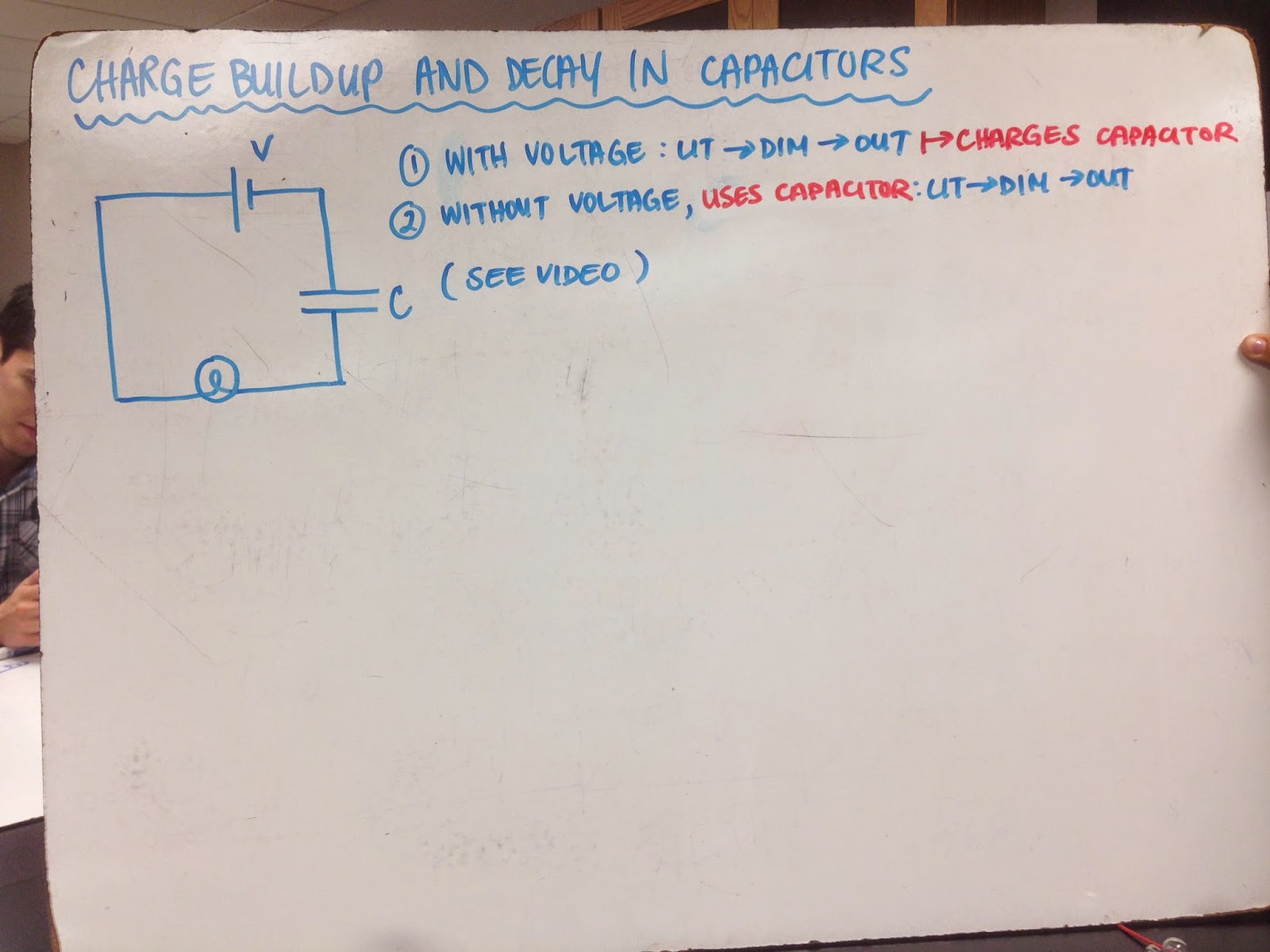Analog and Digital Electronics
 |
| As frequency increases voltage decreases |
 |
| Max Voltage Produced by Phone |
A song was also played on the oscilloscope and the different
voltages the music produces is shown across the screen.
 |
| Jack Johnson on an Oscilloscope |
-adding a capacitor to the circuit with the speaker
Capacitors are frequency dependent so when you add a
capacitor to the circuit with the phone and the speaker, the capacitor acts as
a low pass filter so it passes low frequencies and blocks or gets rid of high
frequencies which are high pitched.
Lighting an LED
A circuit was made with a protoboard, a 150 ohm resistor, and
a led light bulb. The light bulb is a
diode so when you put power into the led light backwards, it does not light
because you are making the depletion zone bigger. The led light bulb also needs a minimum
amount of voltage to light the bulb because you need that minimum voltage to
close the depletion zone.
A switch was then added to the circuit so you could turn on and off the light bulb.
 |
| lighting LED with switch |
Building an Amplifier to Boost Current from an Audio Player
An amplifier was made to make the noise coming from the cell
phone louder than the max voltage
the phone can produce.











































